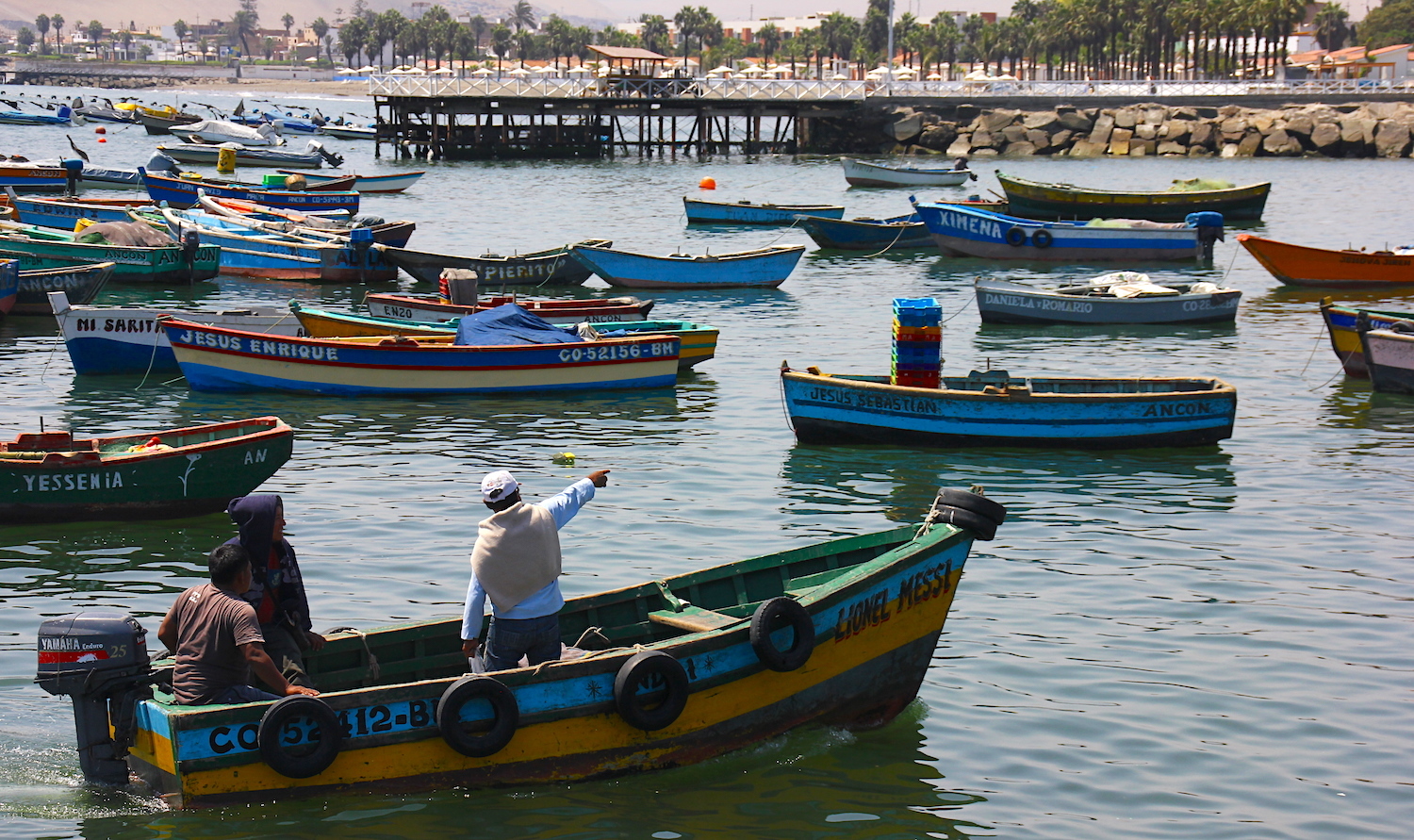
At Future of Fish, we’re proud of the work we do to help transition fisheries towards positive social, environmental and economic outcomes for coastal communities and their oceans. Whether we’re working in Chile, Belize, or in the US, our Fisheries Development Model helps us take a structured, design-focused approach to making long-term systemic change.
In 2018, we dove head first into a new set of fisheries challenges, this time in Peru. Our focus there is on artisanal fisheries – an important traditional—and actively growing—sector of the Peruvian economy that supports hundreds of thousands of families, both directly and indirectly, and supplies the majority of locally consumed marine resources. Our focus is on mahi mahi, squid, and benthic fisheries. Jumbo squid is by far the largest artisanal fishery. Mahi mahi, while not as large a volume, is important in terms of its value and its influence on the international market. For both species, Peru’s fisheries provide around 50% of the world’s catch. The benthic fisheries include a range of bottom-dwelling ocean species including snails, octopus, and crabs, which are essential in traditional peruvian plates like arroz con mariscos or pulpo al olivo.
We’re not working alone: NGOs including The Nature Conservancy (TNC) Peru, Oceana, WWF, and Naturaleza y Cultura (NCI) have done work in these fisheries, and the fishers, communities, chefs, and other stakeholders on the ground are passionate and driven. It’s an exciting place to be working, and as we begin a new phase of our work, we’d like to take a moment to reflect on our progress so far.
Here’s what we did in 2018:
Understanding the system
In order to make changes to a system, it’s vital we first understand it. In early 2018, we did extensive research and analysis to understand Peru’s fisheries, from regulations, to movement of fish through supply chains, to understanding the socio-economic context.
Once we had more of an understanding of how things work currently, we then visited Peru to listen and learn from the wide range of people already working to improve the system in different ways. This includes interviews with fishers, chefs, government officials, and site visits with fishing communities, people working in different parts of the supply chain, and NGOs.
When we speak with people in the field, we aim to listen widely and gain a deep understanding of what drives the behaviors we see in the system: why people do what they do, why certain approaches work and others don’t, how larger system-components such as infrastructure or cultural norms influence people’s actions, and what incentives could help shift stakeholders to more sustainable—and often more profitable—practices.
Finding patterns and identifying opportunities
Once we’d collected all this information from research and field trips, we synthesized what we had found and started to identify patterns and opportunity areas, which we see as key leverage points in the system that are ripe for development. After a socialization process with fishers, chefs, NGOs, and other stakeholders to refine and iterate on these ideas, we ended up with five broad opportunity areas, with a set of potential interventions within each area. These are:
Opportunity areas:
- Leverage Peru’s gastronomic movement to drive seafood sustainability. We envision approaches such as building a community-based brand for merrior fisheries, develop and implement a sustainable seafood standard for Peru, expand the role of fishers to other parts of the supply chain, make the most of species that are currently underutilized and undervalued, and improving quality of locally harvested products to increase value and drive demand.
- Create new partnerships to empower artisanal fishers in local and national politics. This might include using the gastronomic movement to amplify the voice of fishers, forming partnerships with other small-scale producers, and reinventing fisher organizations to build capacity and recognition for their role in the sector.
- Diversify revenue streams through aquaculture and tourism. This might include developing an aquaculture strategy for Peru that would benefit small scale fishers, and incorporating formal structures into tourism and aquaculture endeavors.
- Uproot and modernize data collection and management processes. This might include revisiting approaches to current government mandates towards formalization of the fishery, creating a third-party entity to manage modernized government fisheries data systems, using unconventional methods to generate data, and enabling traceability by leveraging quality.
- Using seafood oriented food safety and health risks as drivers to improve the marine environment. This might include introducing small improvements to handling product dockside, community activism (in the vein of Heal the Bay or Surfrider), using aquaculture to help restore ecosystems, and large-scale infrastructure improvements.
What’s next?
Fomenting change in any system is difficult, and we are looking forward to the challenge Peru presents us. We’ve now wrapped up the research phase of this work, and will move into the implementation phase. Speaking with key partners and stakeholders in Peru, we now have seeds of potential strategies we could use to take advantage of these opportunity areas in a collaborative manner that supports individual efforts already tackling the largest challenges. In the first half of 2019, we’ll start designing, testing, and implementing interventions. We see promise within these opportunity areas, and look forward to great collaboration and success for Peruvian fisheries in 2019!
Published Jan 18, 2019




